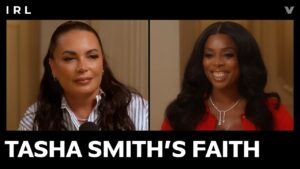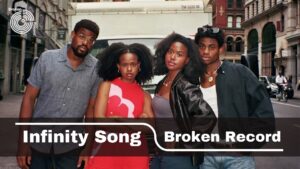On the latest episode of Broken Record with host Justin Richmond, singer-songwriter Annahstasia opens up about her journey through music, from early discovery to the release of her newest album, Tether.
First scouted in high school for a pop career, Annahstasia quickly learned the challenges of the music industry. After entering a major-label contract as a teenager, she found herself caught in an exploitative situation, pressured to meet unrealistic demands and eventually shelved. With the support of her mother, she walked away and returned to college to study political science.
Years later, she’s returned with Tether, a serene, stripped-down album recorded live in-studio. The project removes excess production and highlights her voice and songwriting, revealing an artist who has reclaimed her sound and approach on her own terms.
Annahstasia first realized her singing ability at 14 during a school talent show. Ironically, it was sparked by racist bullying, when classmates mockingly called her a “jukebox.” What began as a hurtful experience became a breakthrough moment after she performed Amy Winehouse’s version of “Valerie.”
Guided by influences like Bill Withers and Nina Simone, she describes her songwriting as a balance between matter-of-fact storytelling and performance. Her father, also an artist, reinforced the weight of the craft, challenging her to write 12 more songs after hearing her first attempt.
Her process remains organic: she writes songs in single sittings during guitar sessions, letting melody, words, and chords arrive together. Many of her songs begin with personal experiences before zooming out to broader human themes, such as accountability in relationships (“Villain”) or shared kindness (“Be Kind”).
Though early setbacks led her to step back from music, Annahstasia found ways to support her career through modeling. After being unexpectedly booked for a Nike campaign, she used that income to finance her independent music path. Fashion also shaped her artistry, her parents worked in the field, and the visual element continues to influence how she presents her work.
She also experienced the limitations of an industry that undervalued live musicianship, often told it was “too expensive.” That changed when she toured with Lenny Kravitz, performing with a live band and realizing how her music thrived in that environment.
Annahstasia’s artistic evolution can be traced through projects like Revival and Surface Tension, which brought her closer to her present sound. She has also appeared in Kendrick Lamar’s music video for “Luther” after being invited by director Karina, and Kravitz himself praised her latest work.
Her new album represents the culmination of her growth: a project rooted in live instrumentation, authenticity, and independence. By rejecting the commercial pressures of the past, Annahstasia has built a body of work that reflects her own timeline and priorities.






